
The 2019 season brought a home run barrage the likes of which we'd never seen before. Of the top 10 teams on the single-season homer list, five of them came last year. The T̶w̶i̶n̶s̶ Bomba Squad set a new Major League record with 307, while the Yankees finished right behind them at 306 -- the first clubs to ever crack the 300 mark.
But if you want to find the most dinger-tastic baseball team of all time, you'll have to look elsewhere. Not under the bright lights of the big leagues, or etched onto the Commissioner's Trophy, but at a dusty track and football stadium in the sixth-largest city in California, where a bunch of kids and castoffs quietly answered the question: "But what if you could play baseball on the moon?"
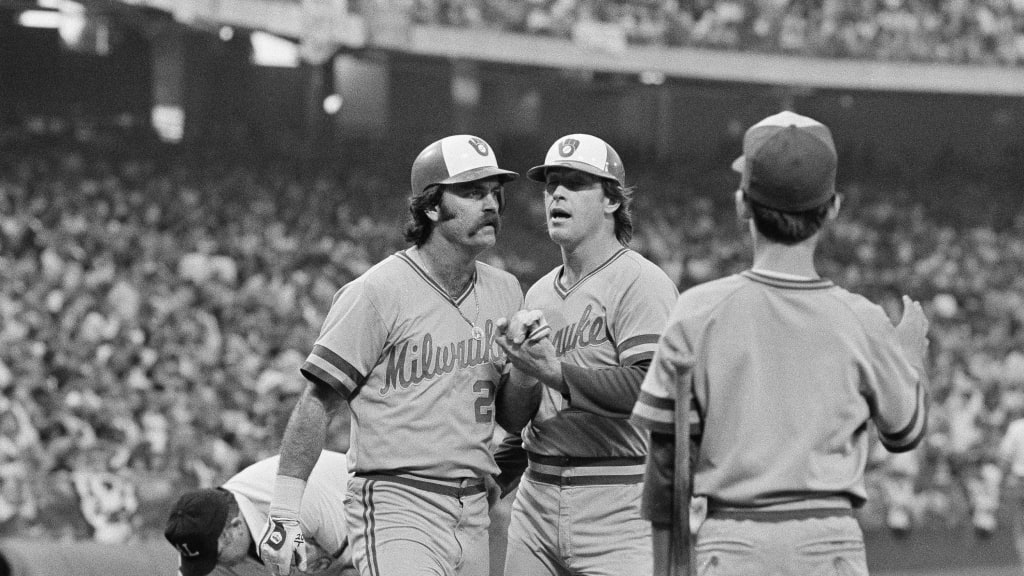
The Brewers' Triple-A affiliate decided to relocate from Eugene, Oreg., prior to the 1974 season, bringing Minor League Baseball back to Sacramento after a 13-year hiatus. They branded themselves the Solons, the name Branch Rickey had given the original club upon buying it and turning it into a Dodgers farm club in 1935. ("Solon" was old journalist slang for "senator," appropriate enough in the capital of California.) They had tradition, they had a name, they'd given their baseball-hungry fan base a home team to root for again. There was just one problem: The Solons didn't have a place to play.
Sacramento's old ballpark, Edmonds Field, was demolished in 1964, four years after the first Solons left town. The city wasn't in a position to build a whole new one from scratch in time for Opening Day, so they improvised with the facility they had handy: Hughes Stadium, home of the Sacramento City College football team.
Hughes, being designed with football and track and field in mind, was ... let's say "not exactly conducive to playing baseball." No matter where the team put home plate, it couldn't get around the fact that the stadium was shaped like a bathtub. The best Sacramento could do was the same thing the Dodgers did when they were forced to play at the L.A. Coliseum prior to the construction of Dodger Stadium: create a comically short porch in left field, put up a giant net and hope for the best. And lo, baseball history was born.
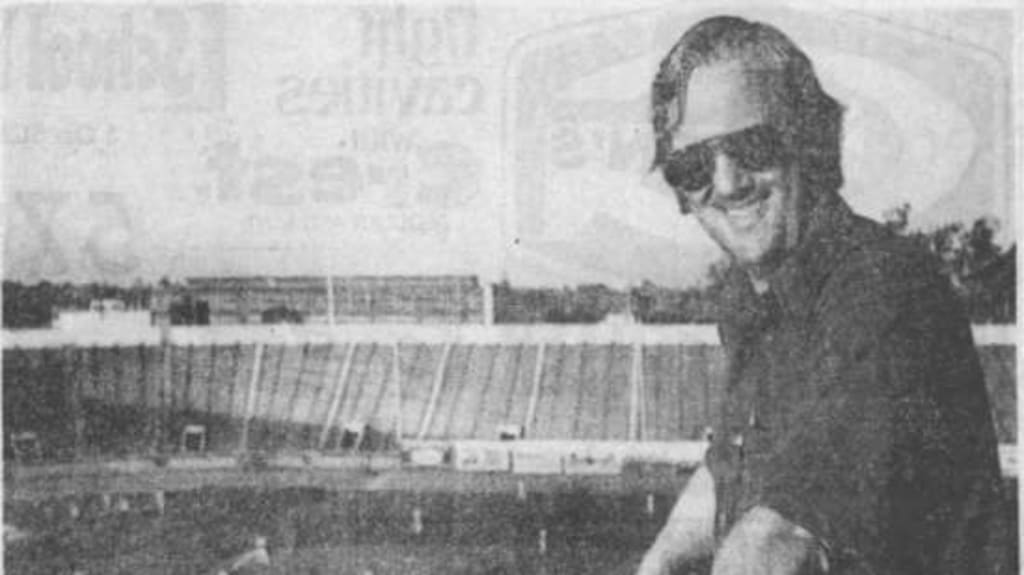
That's Solons owner John Carbray pictured above, but please, try not to get lost in those sunglasses. Focus on the diamond behind him. No, that's not an illusion -- left field really did just ... end, only 233 feet (233 feet!) from home plate. You will probably be able to guess what happened next: Hughes Stadium became a launching pad the likes of which professional baseball had not yet seen, and the Solons -- led by future Brewers slugger Stormin' Gorman Thomas, a man who once did this to Roger Clemens -- commenced their assault on the record books.
The first six games at Hughes saw 51 total home runs. After 13 games, that number had climbed to 93. Left fielders started throwing out runners ... at first base. Sacrifice flies were an impossibility. The stadium quickly became known as the "House of Horrors," while the outfield net was dubbed Mt. Sacramento. Tacoma's Coley Smith was the first pitcher to keep the Solons in the yard for nine innings -- in mid-July, after Sacramento had homered in its first 54 home games.
Carbray framed it as a bold new frontier, the future of the national pastime. "The most boring thing in baseball," he told the Associated Press, "is the 410-foot out." And fans ate it up: The Solons led the Pacific Coast League in attendance in 1974, despite not spending a single day out of last place.
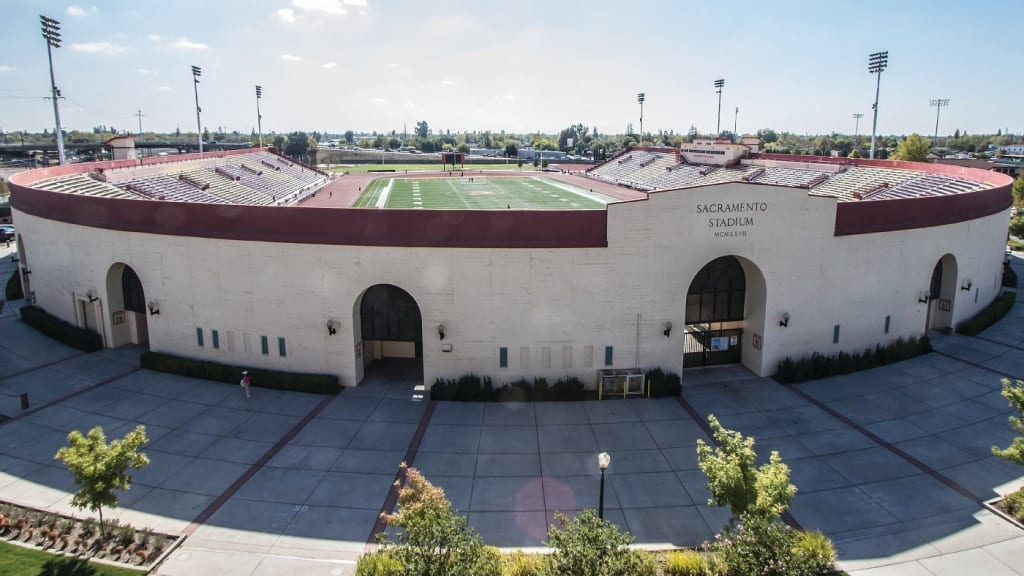
Not everybody was so thrilled, of course. “It’s a Little League park with a big screen,” Salt Lake City manager Norm Sherry grumbled after his team's first series at Hughes. Sacramento's skipper, Hall of Fame pitcher Bob Lemon, just sort of shrugged his shoulders at the whole situation -- while horrifying everyone who grew up on the National League.
"The only time any strategy is involved is the last couple of innings in a game when it’s a matter of one run or so," Lemon said. "It's like pro basketball: You call a timeout in the last two minutes and that's when the game is won. I let them play for eight innings and then try to win it. You never have it won and you're never out of it."
(He wasn't kidding: The Solons once managed to lose a game in which they led, 9-3, with one on and two outs in the top of the ninth inning. The Tacoma Twins hit four straight homers, then a double, then another dinger to steal a 10-9 win.)
Pitchers, meanwhile, cowered in fear. Legend has it that Phoenix manager Rocky Bridges, upset upon discovering that one of his pitchers was an atheist, threatened him with a start at Hughes. The next time Bridges saw him, the pitcher was carrying a Bible and rosary beads. And not without reason: Sacramento's team ERA in 1974 was a jaw-dropping 6.70. The next lowest in the PCL? Salt Lake City at 5.12. (Perhaps the most remarkable part of the whole thing is that, amid all that carnage, someone actually managed to throw a no-hitter: Spokane's Steve Dunning, who struck out 14 and allowed just three extremely shallow fly balls in a 10-0 win.)
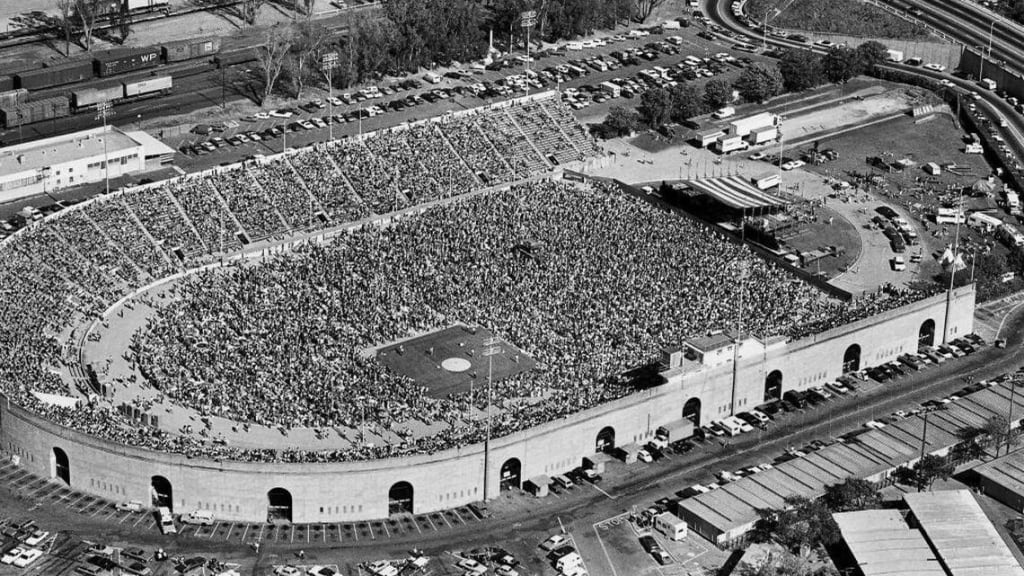
When the dust finally settled, the total numbers were downright obscene. To recap:
- Hughes saw 491 homers in all by home and away teams, almost seven per game.
- Most home runs hit in a single game: 14 -- not once, but twice.
- The Solons as a team wound up hitting 305 dingers in 144 games, good for 342 over a 162-game season -- leaps and bounds above the record that the Twins set last season.
- Second-place Spokane (178 homers) was closer to Phoenix in last (59) than Sacramento in first.
- Nine Solons finished with double-digit homers, led by Bill McNulty with 55 (44 of which came at home) and Thomas with 51. In fact, five of the top eight home run hitters in the Minors in 1974 came from Sacramento.
- Solons team slugging percentage: .521. The next-highest number: Spokane at .453.
- Only two Sacramento pitchers managed to finish with an ERA under 5 -- and there were more pitchers with an ERA above 7.00 (seven) than below that mark (six).
- On a related note: Poor Gary Cavallo threw 116 innings, posted a 9.16 ERA ... and finished with a record of 7-5.
- Despite all those fireworks, Thomas and fellow outfielder Sixto Lezcano (who hit .325/.393/.602 with 34 homers that year) were the only two Solons hitters who went on to become regulars in the Brewers' lineup.
Carbray finally relented in 1975, changing the angle of home plate, tearing up the cinder track and pushing back the left-field fence to about 250 feet away. Hughes' offensive numbers came down to Earth a bit, but they were still outrageous, and big league teams found it hard to justify playing in a park that so thoroughly warped the game -- despite these sharp shorts the Solons started rocking in '75:
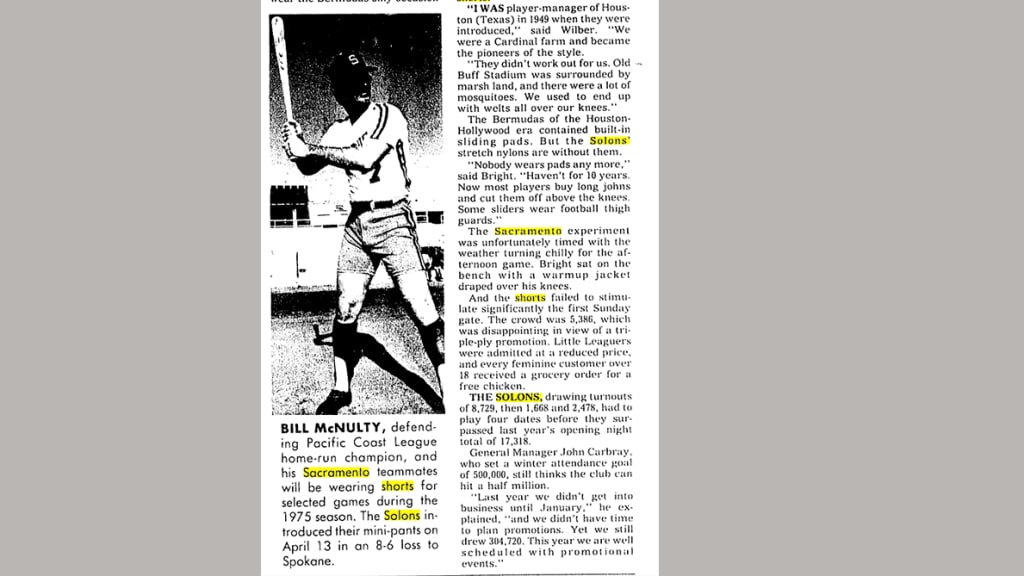
Milwaukee left town after the 1975 season, and the Rangers spent just one year there before bailing as well. Another 23 years would go by before the city would get professional baseball again, when the Triple-A Vancouver Canadians became the Sacramento River Cats, an affiliate of the San Francisco Giants. The team plays its home games at the sparkling Sutter Health Park, in West Sacramento. It plays 330 feet to left.
